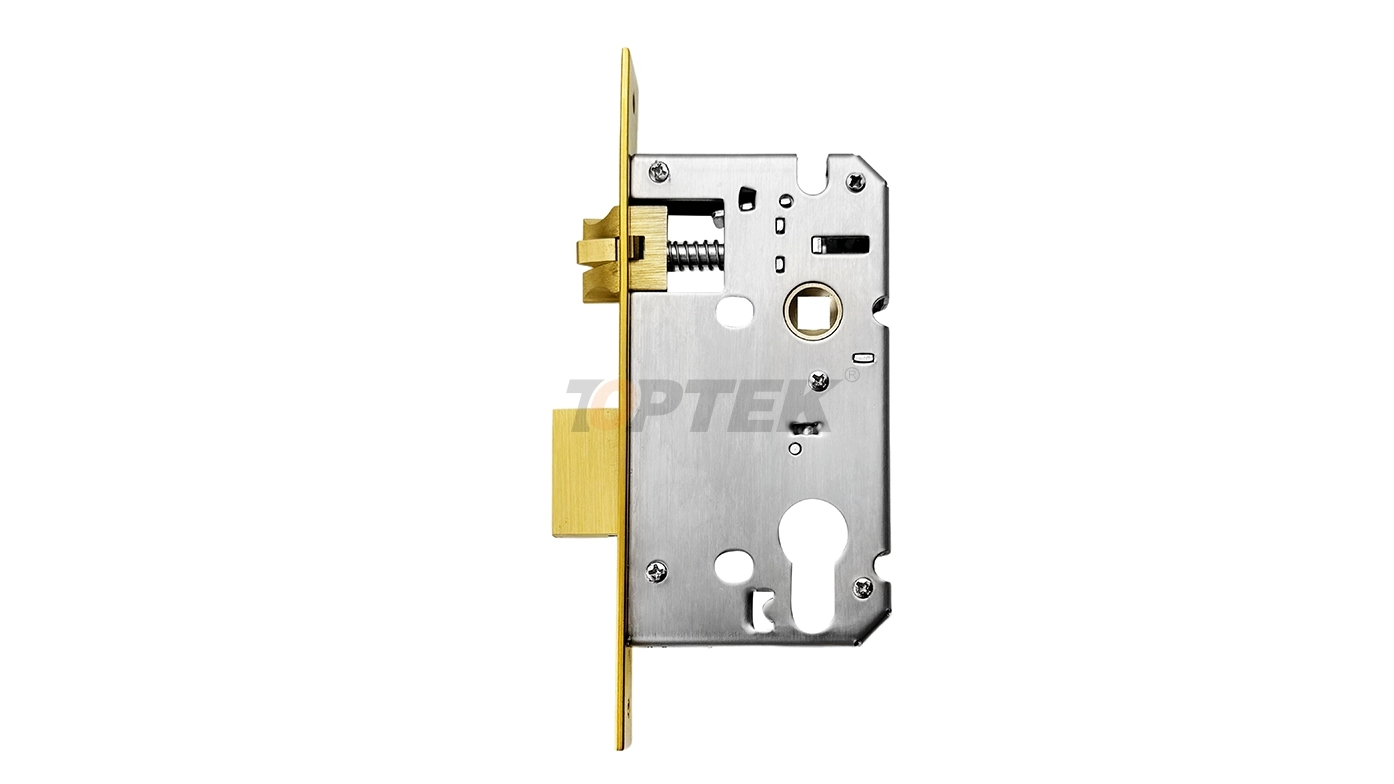Replacing a commercial lock might seem like a complex task reserved for professional locksmiths, but with the right tools and knowledge, many business owners can handle this essential security upgrade themselves. Whether your current lock has failed, you need to update your security system, or you're simply looking to enhance your business's protection, understanding the replacement process can save you time and money.
Commercial locks differ significantly from residential ones in terms of durability, security features, and installation requirements. They're designed to withstand heavy use, provide enhanced security, and often integrate with access control systems. This guide will walk you through everything you need to know about replacing a commercial lock, from selecting the right type to completing the installation safely and effectively.
Before diving into the replacement process, it's important to assess whether a full replacement is necessary or if repairs might suffice. Signs that indicate you need a new commercial lock include visible damage to the lock mechanism, keys that no longer turn smoothly, frequent jamming, or outdated security features that no longer meet your business needs.
Understanding Commercial Lock Types
Commercial locks come in various styles, each designed for specific security needs and door types. The most common types include cylindrical locks, mortise locks, deadbolts, and electronic access control systems.
Cylindrical locks are the most straightforward to replace and are commonly found on office doors and interior commercial spaces. They consist of a knob or lever with the locking mechanism contained within the door handle itself. These locks are ideal for areas that don't require maximum security but still need reliable access control.
Mortise locks offer superior security and are typically used on exterior doors or high-security areas within commercial buildings. They're installed within a pocket (mortise) cut into the door and feature a more complex mechanism than cylindrical locks. The installation process is more involved, but they provide enhanced durability and security features.
Deadbolts provide additional security when used alongside other locking mechanisms. Commercial-grade deadbolts are significantly more robust than residential versions and often feature longer bolts and reinforced strike plates.
Electronic locks and access control systems represent the cutting edge of commercial security. These systems can include keypad entry, card readers, or smart locks that integrate with building management systems.
Tools and Materials You'll Need
Before beginning your commercial lock replacement project, gather all necessary tools and materials. Having everything on hand will make the process smoother and more efficient.
Essential tools include a drill with various bit sizes, screwdrivers (both flathead and Phillips), a chisel set, a hammer, measuring tape, a pencil for marking, and a level to ensure proper alignment. You'll also need safety equipment such as safety glasses and work gloves.
The materials list includes your new commercial lock set, wood screws (usually provided with the lock), and possibly wood filler if you need to fill old screw holes. Depending on your specific situation, you might also need a new strike plate, door reinforcement hardware, or additional weatherproofing materials for exterior installations.
Step-by-Step Replacement Process
Start by removing the old lock completely. Begin with the interior components by unscrewing the mounting screws that hold the lock mechanism to the door. Most commercial locks have screws on the interior side that, once removed, allow you to pull the lock components apart and remove them from both sides of the door.
Next, remove the latch mechanism from the door edge. This typically involves removing two screws that hold the latch plate in place, then pulling the entire latch assembly out of the door. Take note of how the old latch is positioned, as you'll need to install the new one in the same orientation.
Clean the door thoroughly, removing any debris or old lubricant from the lock holes. This is also an excellent time to inspect the door for any damage that might affect the new lock's performance.

Installing Your New Commercial Lock
Begin installation by inserting the new latch mechanism into the door edge. Ensure the latch is oriented correctly—the angled side of the latch bolt should face the direction the door closes. Secure the latch with the provided screws, making sure it sits flush with the door edge.
Install the exterior portion of the lock first, threading the connecting screws or spindle through the latch mechanism. Most commercial locks have specific alignment requirements, so follow the manufacturer's instructions carefully to ensure proper fit.
Attach the interior portion of the lock, aligning it with the connecting hardware from the exterior component. Tighten all screws securely, but avoid over-tightening, which can bind the mechanism or strip the threads.
Test the lock operation before completing the installation. The handle or lever should move smoothly, and the latch should extend and retract fully without binding. If the operation feels stiff or uneven, check the alignment and adjust as necessary.
Adjusting the Strike Plate
The strike plate installation is crucial for proper lock function and security. Position the strike plate on the door frame so that it aligns perfectly with the latch bolt when the door is closed. Mark the screw holes and the outline of the strike plate opening.
If you're replacing an existing lock with a similar model, the old strike plate location might work perfectly. However, if the new lock has different dimensions, you may need to relocate or modify the strike plate installation.
Cut or enlarge the strike plate mortise as needed, using a sharp chisel and hammer. Work carefully to avoid splitting the door frame. Test fit the strike plate frequently to ensure a proper fit.
Install the strike plate with the provided screws, ensuring it sits flush with the door frame surface. For maximum security, use screws that are long enough to penetrate well into the structural framing behind the door jamb.
Testing and Fine-Tuning
After completing the installation, thoroughly test all lock functions. Open and close the door multiple times, engaging and disengaging the lock from both sides. The operation should be smooth and consistent every time.
Check that the door closes properly and that the latch engages the strike plate cleanly. If the door doesn't close smoothly or if you hear grinding or scraping sounds, adjustments may be needed to the strike plate position or the latch alignment.
Test any additional features your new commercial lock might have, such as multiple locking positions, key override functions, or electronic components. Ensure all keys work smoothly and that any access codes or electronic features function as expected.
When to Call a Professional
While many commercial lock replacements are within the scope of a handy business owner, certain situations require professional expertise. If your installation involves modifying door frames, installing complex electronic systems, or working with high-security locks that require special tools or certifications, it's best to hire a qualified locksmith.
Professional installation may also be required to maintain warranties or comply with insurance requirements. Some commercial insurance policies specify that security hardware must be installed by certified professionals to ensure coverage in case of a break-in.
Securing Your Investment
Replacing your commercial lock is an investment in your business's security and your peace of mind. By following these steps carefully and taking the time to do the job right, you'll have a reliable, secure lock that will serve your business well for years to come. Remember to keep all documentation, keys, and any override codes in a secure location, and consider establishing a regular maintenance schedule to keep your new lock operating at peak performance.
Regular maintenance, including periodic lubrication and checking for wear, will extend the life of your new commercial lock and ensure it continues to provide the security your business depends on.
ANSI/BHMA certified commercial lock
commercial lock
ANSI Commercial Lock
English
العربية
Français
Русский
Español
Português
Deutsch
italiano
日本語
한국어
Nederlands
Tiếng Việt
ไทย
Polski
Türkçe
አማርኛ
ພາສາລາວ
ភាសាខ្មែរ
Bahasa Melayu
ဗမာစာ
தமிழ்
Filipino
Bahasa Indonesia
magyar
Română
Čeština
Монгол
қазақ
Српски
हिन्दी
فارسی
Kiswahili
Slovenčina
Slovenščina
Norsk
Svenska
українська
Ελληνικά
Suomi
Հայերեն
עברית
Latine
Dansk
اردو
Shqip
বাংলা
Hrvatski
Afrikaans
Gaeilge
Eesti keel
Māori
සිංහල
नेपाली
Oʻzbekcha
latviešu
অসমীয়া
Aymara
Azərbaycan dili
Bamanankan
Euskara
Беларуская мова
भोजपुरी
Bosanski
Български
Català
Cebuano
Corsu
ދިވެހި
डोग्रिड ने दी
Esperanto
Eʋegbe
Frysk
Galego
ქართული
guarani
ગુજરાતી
Kreyòl ayisyen
Hausa
ʻŌlelo Hawaiʻi
Hmoob
íslenska
Igbo
Ilocano
Basa Jawa
ಕನ್ನಡ
Kinyarwanda
गोंगेन हें नांव
Krio we dɛn kɔl Krio
Kurdî
Kurdî
Кыргызча
Lingala
Lietuvių
Oluganda
Lëtzebuergesch
Македонски
मैथिली
Malagasy
മലയാളം
Malti
मराठी
ꯃꯦꯇꯥꯏ (ꯃꯅꯤꯄꯨꯔꯤ) ꯴.
Mizo tawng
Chichewa
ଓଡ଼ିଆ
Afaan Oromoo
پښتو
ਪੰਜਾਬੀ
Runasimi
Gagana Samoa
संस्कृत
Gaelo Albannach
Sepeti
Sesotho
chiShona
سنڌي
Soomaali
Basa Sunda
Wikang Tagalog
Тоҷикӣ
Татарча
తెలుగు
ትግንያውያን
Xitsonga
Türkmençe
संस्कृत
ئۇيغۇرچە
Cymraeg
isiXhosa
ייִדיש
Yorùbá
isiZulu





































